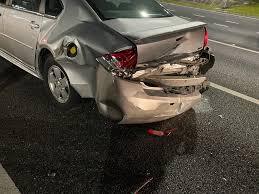Cervical radiculopathy settlements in Florida vary widely, from a few thousand to over $400,000, depending on injury severity, medical costs, and insurance policy limits. Lawyer fees typically range from 30% to 40% of the settlement.
If you suffered from cervical radiculopathy after a car accident in Florida, you’re likely wondering how much your settlement could be.
The truth is, settlement amounts can vary significantly—ranging from a few thousand dollars to over $400,000—based on factors such as injury severity, medical expenses, and the at-fault driver’s insurance policy limits.
In this guide, we’ll break down the key factors that influence your compensation, including legal fees, insurance payouts, and how policy limits impact the final amount. We’ll also explain how Applebaum Accident Group can help connect you with experienced attorneys to maximize your claim.
Cervical Radiculopathy After a Car Accident
Cervical radiculopathy is a serious medical condition that can develop after a car accident, often resulting in chronic pain and lasting mobility issues. If you’re dealing with this injury, research its causes, symptoms, and impact on your settlement.
What Is Cervical Radiculopathy?
Cervical radiculopathy occurs when a nerve root in the cervical spine (neck) is compressed or irritated. This condition can lead to radiating pain, weakness, and numbness in the neck, shoulders, arms, and hands. Because the cervical spine controls nerve functions, injuries here can significantly affect daily life, work, and long-term health.
Common Causes of Cervical Radiculopathy in Car Accidents
While cervical radiculopathy can develop over time due to degenerative conditions, traumatic injuries from car accidents are a leading cause. The sudden force of a crash can damage the spinal discs, leading to:
- Herniated Discs: When the soft center of a spinal disc pushes through its outer layer, it can press on nearby nerves.
- Spinal Stenosis: A narrowing of the spinal canal that compresses nerve roots, often aggravated by trauma.
- Degenerative Disc Disease: A condition where the spinal discs lose hydration and flexibility, making them more prone to injury.
- Direct Trauma: Whiplash, rear-end collisions, and high-impact crashes can cause immediate nerve compression and inflammation.
Symptoms: How Cervical Radiculopathy Affects Victims
The symptoms of cervical radiculopathy can vary depending on the severity of the nerve compression and which vertebrae are affected. Common symptoms include:
- Neck Pain: A sharp or burning sensation that may radiate down the shoulders and arms.
- Numbness and Tingling: A “pins and needles” feeling in the arms, hands, or fingers.
- Weakness: Loss of grip strength, difficulty lifting objects, or reduced mobility in the affected limb.
- Muscle Spasms: Involuntary contractions or tightness in the neck and shoulders.
Many accident victims initially dismiss these symptoms as minor aches, only to realize weeks later that their condition is worsening. Early diagnosis and treatment are helpful for your health, but also for strengthening your legal case.
Time is of the essence – Florida law requires accident victims to seek medical treatment within 14 days to remain eligible for Personal Injury Protection (PIP) benefits. If you haven’t yet seen a doctor, don’t wait.
Factors That Affect Your Cervical Radiculopathy Settlement in Florida

No two injury settlements are the same, especially when it comes to cervical radiculopathy caused by a car accident. Your compensation depends on a range of factors, from the severity of your injury to the insurance policies in play.
Here’s what will impact how much you can receive:
1. Injury Severity: The Biggest Settlement Factor
The more severe your cervical radiculopathy, the higher your potential settlement. Cases that require surgery or lead to permanent impairment tend to result in larger payouts.
💰 Mild Cases: If your symptoms are manageable with physical therapy and medication, settlements often range between $20,000 and $90,000.
💰 Moderate Cases: If you require epidural steroid injections, chiropractic care, or extended treatment, you may be looking at $90,000 to $200,000.
💰 Severe Cases: If surgery (such as a spinal fusion) is needed or you suffer long-term disability, settlements can exceed $400,000.
The extent of your medical treatment and long-term prognosis will play a significant role in determining your final compensation.
2. Medical Costs: Covering Every Dollar of Your Treatment

Your settlement should fully account for every medical expense, including:
- Emergency Room Visits – Initial evaluations, X-rays, and diagnostic tests.
- Ongoing Medical Care – Physical therapy, pain management, and chiropractic care.
- Surgical Procedures – If a herniated disc requires spinal fusion, discectomy, or other surgeries.
- Prescription Medications – Pain relievers, muscle relaxants, and anti-inflammatory drugs.
- Future Medical Expenses – Projected costs for long-term rehabilitation or future surgeries.
Insurance companies may try to downplay your medical costs by arguing that certain treatments were unnecessary. Keep detailed medical records and receipts to fight back.
3. Lost Income: Compensation for Missed Work
If your cervical radiculopathy prevents you from working, you’re entitled to compensation for:
- Lost Wages – Any income lost while recovering.
- Reduced Earning Capacity – If you can’t return to the same job or need to work fewer hours.
- Job Retraining Costs – If you need to switch careers due to physical limitations.
For many accident victims, the inability to work creates significant financial strain. A proper settlement should reflect both current and future income loss.
4. Pain and Suffering: Beyond Medical Bills
Not all damages are financial—some are deeply personal. Pain and suffering compensation acknowledges:
- Physical Pain – Chronic neck pain, headaches, and nerve damage.
- Emotional Distress – Anxiety, depression, PTSD from the accident.
- Loss of Enjoyment of Life – If your injury limits hobbies, sports, or daily activities.
Florida uses different methods to calculate pain and suffering, including multiplier formulas based on your total medical bills. Your lawyer will argue for the highest possible valuation based on your unique situation.
Related Article -> Average Florida Car Accident Settlement For Pain & Suffering
5. Insurance Policy Limits: The Hidden Ceiling on Your Settlement
Even if your damages exceed six figures, your final payout depends on insurance policy limits. Florida law requires drivers to carry at least $10,000 in Personal Injury Protection (PIP) coverage, but this only covers basic medical bills.
Your settlement could be limited by:
- At-Fault Driver’s Insurance: If they only carry minimum coverage, their policy may not fully cover your losses.
- Your Uninsured/Underinsured Motorist Coverage: If the other driver lacks sufficient insurance, your own policy may provide additional compensation.
- Commercial Policies: If the at-fault party was driving a company vehicle, higher policy limits may be available.
Warning: Insurance companies will never voluntarily offer the maximum payout. They may try to pressure you into accepting a lowball settlement before you realize the full extent of your damages.
Don’t Let Time Run Out
These factors are key to negotiating a fair settlement. But insurance companies don’t make it easy. Applebaum Accident Group connects accident victims with top legal professionals who fight for maximum compensation.
Move quickly to build a strong case and secure your financial recovery.
Florida’s 14-day rule requires accident victims to seek medical attention quickly, or they risk losing benefits. Act now to protect your claim.
Related article: Florida 14-Day Accident Law
Lawyer Fees and Insurance Coverage

Hiring an attorney for your cervical radiculopathy car accident settlement is an investment—but one that often results in significantly higher compensation than handling a claim alone. Meanwhile, navigating Florida’s complex insurance system can be challenging, especially when dealing with policy limits and no-fault laws. Here’s how both factors impact your settlement.
How Much Do Lawyers Take from a Settlement?
Most personal injury lawyers in Florida work on a contingency fee basis, meaning you don’t pay unless you win. However, the attorney’s cut typically ranges from 30% to 40% of your final settlement.
Typical Fee Structure:
- Before filing a lawsuit: 33.3% of the total settlement.
- If the case goes to trial: 40% due to additional litigation costs.
While this may seem like a significant portion, a skilled attorney often secures substantially higher payouts—even after fees—than individuals who negotiate alone. Plus, they handle all legal complexities, from proving negligence to negotiating with aggressive insurance adjusters.
Florida’s No-Fault Insurance: What It Covers (and What It Doesn’t)
Florida operates under a no-fault insurance system, meaning that Personal Injury Protection (PIP) covers initial medical expenses—regardless of who caused the accident.
What PIP Covers
- Medical Bills (up to 80% of necessary treatment costs).
- Lost Wages (up to 60% of missed income).
- Death Benefits (if the accident results in a fatality).
But here’s the catch
- PIP is capped at $10,000, which is rarely enough for serious injuries like cervical radiculopathy.
- If your injury is classified as “non-emergency,” PIP may only cover $2,500—leaving you with out-of-pocket expenses.
- Pain and suffering damages are NOT covered under PIP—you must file a separate claim against the at-fault driver’s insurance.
Pursue additional compensation, especially for long-term medical needs and lost income.
How the At-Fault Driver’s Insurance Impacts Your Settlement
While Florida is a no-fault state, you can pursue additional compensation if your injuries meet the state’s serious injury threshold—which includes:
- Permanent injury
- Significant disfigurement or scarring
- Loss of bodily function
Once you prove the other driver’s negligence, their bodily injury liability (BIL) coverage should cover additional costs. However, policy limits matter—if the at-fault driver only carries minimum coverage, your payout may be capped.
Navigating Settlements and Lawsuits: What to Expect

For many car accident victims, negotiating a fair settlement can feel overwhelming. Insurance companies often try to lowball offers, delay payouts, or deny valid claims altogether. Having a lawyer by your side can make a significant difference—not just in the amount you receive, but also in how quickly and smoothly the process moves.
Here’s what to expect when negotiating a settlement or, if necessary, taking your case to court.
The Negotiation Process: Fighting for Maximum Compensation
Insurance companies aren’t in the business of paying out big settlements—they’re in the business of protecting their bottom line. That’s why they often:
- Dispute medical bills as “unnecessary” or “excessive.”
- Blame pre-existing conditions instead of the accident.
- Downplay pain and suffering to avoid large payouts.
- Delay claims in hopes you’ll accept a lower offer out of frustration.
A skilled lawyer knows how to counter these tactics by:
- Presenting Strong Medical Evidence – Linking your cervical radiculopathy directly to the accident.
- Calculating ALL Damages – Not just medical bills, but lost income, pain and suffering, and future expenses.
- Using Prior Settlements as Leverage – Demonstrating how similar cases resulted in higher payouts.
- Threatening Legal Action – Insurance companies take claims more seriously when they know a lawyer is ready to go to court.
💡 Most personal injury cases settle before trial—but only when the insurer believes you won’t back down.
Going to Trial: When It’s Necessary
If the insurance company refuses to offer a fair settlement, your lawyer may recommend filing a lawsuit. This doesn’t always mean you’ll end up in court—many cases still settle before ever reaching trial.
However, going to trial may be necessary if:
- The insurance company won’t budge on a low offer.
- There are disputes about who was at fault.
- Your damages exceed the at-fault driver’s policy limits, requiring legal action for additional compensation.
How does trial affect your case?
- Stronger leverage: The insurance company may increase their offer once they see you’re serious.
- Longer timeline: Lawsuits can take months or even years, depending on the case.
- Higher costs: Lawyer fees increase if a case goes to trial, but most attorneys only get paid if you win.
Insurance companies fear jury trials—juries often sympathize with injured victims and award higher compensation. Sometimes, just filing a lawsuit is enough to force a better settlement.
Related Article -> Why Is My Florida Car Accident Claim Going to Court?
Protecting Your Claim
If you’re dealing with cervical radiculopathy from a car accident, here’s how to maximize your settlement and avoid common pitfalls:
✔️ Consult a Personal Injury Lawyer – A skilled attorney knows how to negotiate with insurance companies and fight for full compensation.
✔️ Keep Detailed Records – Medical bills, missed workdays, and pain journals strengthen your case.
✔️ Don’t Settle Too Soon – Many victims accept low offers before realizing the full long-term costs of their injury.
If you’ve received a settlement offer, don’t accept it without legal advice—once you sign, you can’t ask for more money later.
Why Legal Help Makes a Difference
Cervical radiculopathy can be a life-changing injury—and the settlement you accept today affects your future. Insurance companies will push you to settle fast and for less, but a lawyer fights for your best interest.
Contact Applebaum Accident Group. We connect accident victims with top personal injury attorneys who know how to maximize your payout.





